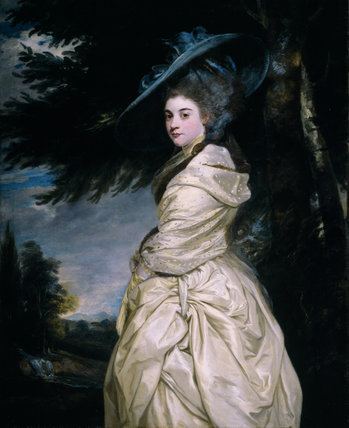Name Henrietta Countess | Died June 3, 1830 | |
 | ||
Henrietta Antonia Clive, Countess of Powis (née Lady Henrietta Antonia Herbert; 3 September 1758 – 3 June 1830), was a British writer, mineral collector and botanist. Her time in India, while her husband was Governor of Madras, was inspirational to her for all three of these pursuits.
Contents
Family
Born in Oakley Park, at Bromfield, Shropshire, into a landed and titled family, she was the daughter of Henry Herbert, 1st Earl of Powis, and Barbara, granddaughter of William Herbert, 2nd Marquess of Powis. Her family owned a property in London and significant estates in Wales and Shropshire. Her birthplace was sold to Robert Clive, 1st Baron Clive, in 1771, so Lady Henrietta spent her teenage years at the family's ancestral home, Powis Castle.
Lady Henrietta married Lord Clive's eldest son and heir, Edward Clive, 1st Baron Clive, in 1784. The marriage was beneficial to both families; the bride's family had a prestigious name but considerable debts, while the groom accrued wealth built during Clive's military campaigns in India. The couple settled in Walcot Hall, at Lydbury North near Bishop's Castle, Shropshire. Their four children were:
Lady Clive inherited the Herbert estates upon the death of her brother, George Herbert, 2nd Earl of Powis, in 1801, when the Earldom became extinct. Three years later, it was recreated in favour of her husband, making her Countess of Powis.
The Countess of Powis died at Walcot Hall in 1830 aged 71 and was buried at Bromfield Parish Church, near Oakley Park. Her husband survived her, dying in 1839.
Mineral collection and botany
In 1798, Lord Clive was appointed Governor of Madras. Lady Clive followed him to India where she started collecting rocks and minerals, as the first aristocratic woman to pursue that hobby. As her collection was growing, Lady Clive contacted prominent collectors and mineral dealers, such as James Sowerby, John MacCulloch and the Countess of Aylesford. Her records show that many specimens had been given to her by her children. The minerals in Lady Clive's collection, numbering up to 1,000, are arranged systematically by chemistry, as was usual in the early 19th century. In 1817, she organised her collection in two handwritten catalogues, using numbers to identify each specimen and helping the collection remain remarkably complete to this day. A quarter of the original collection is now kept at the National Museum Wales as one of the most important historic mineral collections, having been donated by her great-grandson, George Herbert, 4th Earl of Powis, in 1929.
Upon arriving in India, Lady Powis also created a garden and kept a record of the plants in the area of Mysore and the Carnatic region.
Writing
Lady Clive's Journals are one of the very first written accounts of India by a British woman. Published as Birds of Passage, they were an important milestone in the emergence of female travel writers to join and challenge their male counterparts.
